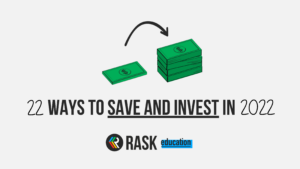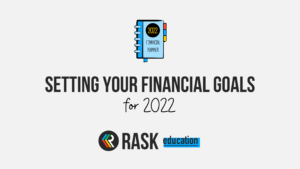As the name suggests, a managed fund is a pool of money managed by a professional fund manager. Individual investors pool money in a fund, which is then managed by a funds management company for a fee.
Note: Managed Funds are called ‘mutual funds‘ in the US of A.
How Does A Managed Fund Work?
Managed funds commonly invest in shares, property, bonds, cash or alternative assets. Sometimes, it’s a combination of two or more assets classes — These are called ‘multi-asset‘ funds.
Managed funds can be a convenient and efficient way to invest because one investment can open the door to a diversified portfolio of investments.
For example, if you buy into an Australian share managed fund the investment manager could buy 30, 40, 50 or more shares. By making one investment, you can get exposure to the entire portfolio.
Managed funds can also give investors exposure to assets and markets they may not normally be able to access, like foreign bond markets.
Most managed funds are unit trusts. What that means is that when you invest in a managed fund, you get ‘units’ in the fund worth the value of your investment. For example, if the unit price is $1.20 and you invest $120,000, you get 100,000 units.
Active and Passive
Managed funds can use passive or active investment strategies. A passive portfolio simply tracks a market index, such as the ASX 200 or Dow Jones Industrial Average, with little room for the manager to deviate from the index rules. An ‘active’ management strategy allows the manager to use their judgement and skill to make investments. They hope to make a greater return.
To learn more about the difference between passive and active investing, check out our blog post: Active v Passive Investment Strategies.
To learn about the ASX 200 index, including what it is, how it’s calculated and what it’s used for, head to our blog post: What is the ASX 200?
Fees
Actively managed funds typically charge a higher management fee than passively managed funds. Also, they may charge a ‘performance fee‘ for superior performance to a predefined level. For example, they might charge 10% of any gain more than the market.
To learn more about managed fund fees, also known as the Management Expense Ratio (MER), visit our blog post: Management Expense Ratio (MER) & Indirect Cost Ratio (ICR) Explained.
To see the enormous impact that a difference in management fees can have on your investment, try out our free managed fund fee calculator.
What is the Buy/Sell Spread?
A buy/sell spread is usually stated as a percentage. The spread is ‘charged’ or levied by fund managers to cover the cost of investors entering and exiting the fund. For example, when you invest your money in a fund, the fund manager must take that money and buy assets (e.g. shares) on the market, which incurs brokerage charges.
Brokerage charges? Huh?
Visit our blog post, 10 Australian Share Broking Accounts, to learn more.
Product Disclosure Statement (PDS)
A PDS must accompany any financial product sold to retail investors (i.e. most of us that aren’t trillionaires). This document can look intimidating, but it’s worth reading because it contains everything you need to know about a managed fund, including:
- The strategy
- Who is managing the fund
- The fees
- Information on taxation, and
- Risks
To learn more about a PDS, as well as two other vital finance documents, visit our blog post: Explained: What Is A PDS, FSG And Terms?
TIP: The ICR (or Indirect Cost Ratio) is required to be disclosed in a PDS – it compares the total costs of a fund to make it easy to compare with other similar funds. Click here to learn more about the ICR.
Dividends and Distributions
Because managed funds often invest in interest-earning or dividend-paying assets, they often make quarterly or half-yearly distributions to investors. These are very similar to dividends from shares and can include franking credits.
What the heck are franking credits?
Visit our blog post, What Are Franking Credits?, to find out.
Have more questions about dividends?
Head to our post, What Are Share Dividends, where we answer the most common questions about dividends, including:
- What does ex-dividend mean?
- What is a cum-dividend share?
- Why do share prices fall when companies pay dividends?
- What are preference share dividends?; and
- More!
What Is A ‘High Water Mark’?
A high water mark is included in some actively managed funds fee structure to ensure the manager does not make a terrible return in one period, then outperform in the next period and charge a performance fee (after all, they are just getting back what was lost!). Just like the high water mark on a pier or jetty, the manager will only charge a performance fee once the unit price is above the previous high level.
What is the Unit Price?
The unit price is the value of all investments in the fund. It is often ‘priced’ or ‘struck’ daily. However, it can be priced monthly, quarterly or even half-yearly. Sometimes, it can be difficult for funds to price their assets accurately. For example, a commercial property in a managed fund may only be valued once every six months, so the manager must use an estimate to price the fund between valuations.
Applying and Redeeming
Applying to invest in a fund can be time-consuming and involve proof of identification. For unlisted funds, you must apply directly to the fund manager and fill out some paperwork.
However, many funds are now ‘listed’ on the stock exchange, just like shares. These are called Exchange Traded Funds or ETFs. You can buy into these funds by investing in them just like you would with an ordinary share.
The PDS will provide instructions on applying and redeeming your investment from the fund.
To learn more about ETFs, including what they are and how to buy them, head over to our blog post: What Is An Exchange Traded Fund (ETF)?
OR, why not take a look at our FREE Beginner’s ETF Investing Course!
[ls_content_block id=”27643″ para=”paragraphs”]



